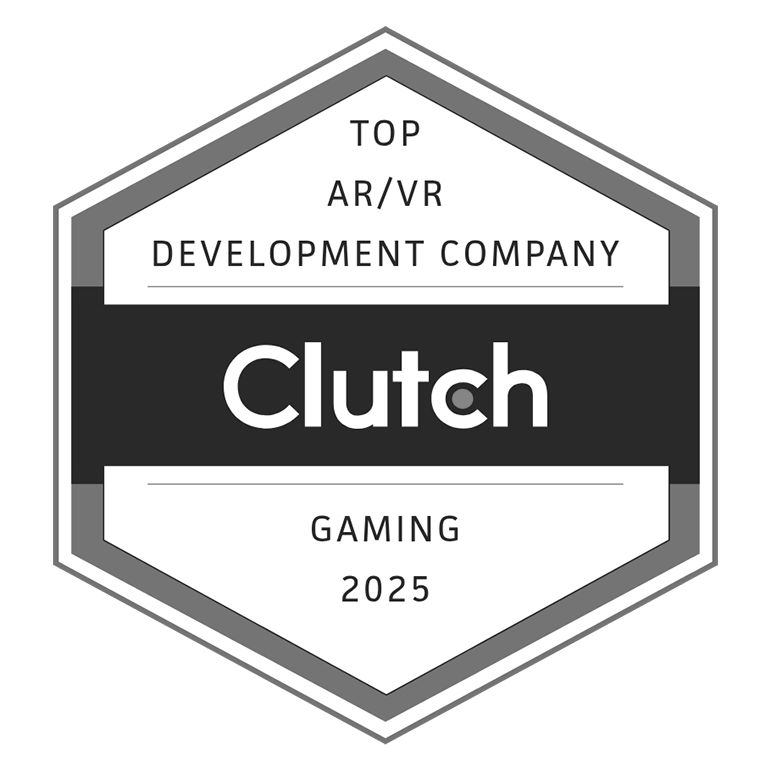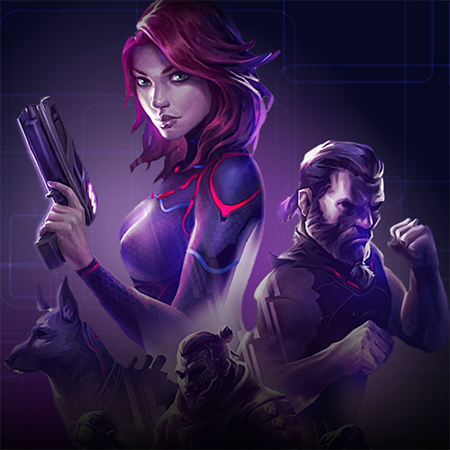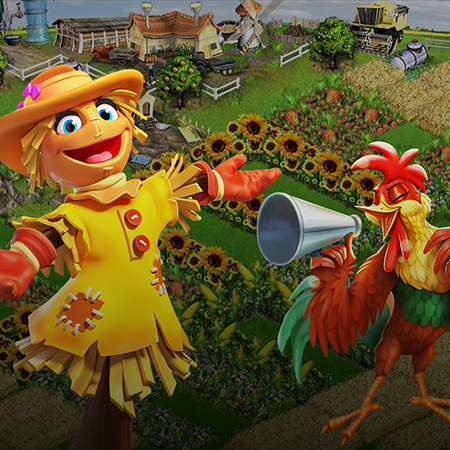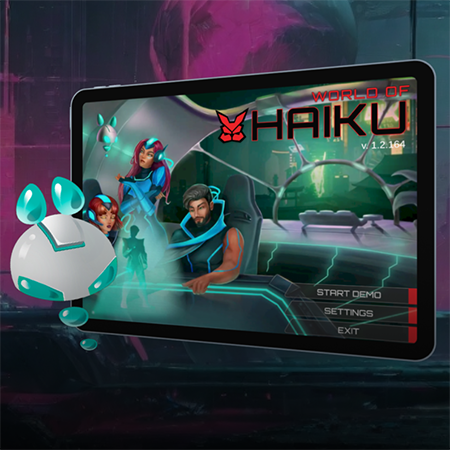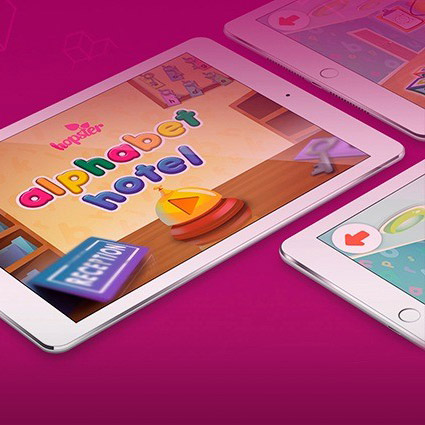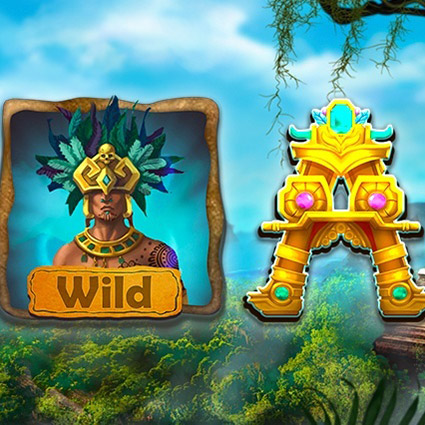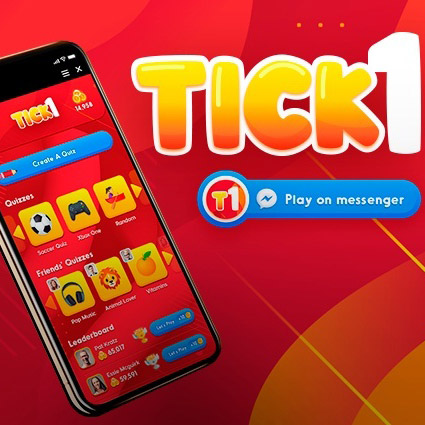Casinos are adding new ways to attract and retain players, and AI avatars are becoming one of the most effective tools for this purpose. A 3D avatar can serve as a host, a dealer, or even a concierge inside a platform, giving players a consistent and engaging presence.
Unlike static graphics, 3D animated avatars can react in real time, adjust expressions, and respond through natural speech. For casinos competing in both physical and online markets, the introduction of AI in casinos offers measurable benefits such as higher acquisition rates, longer play sessions, and stronger player loyalty.
Operators in the social gaming casino sector already use avatars to create an interactive environment where players feel more connected. A casino avatar can welcome new users, introduce promotions, and guide them toward games that fit their interests.
More importantly, avatars can sustain interaction during breaks in play, reducing churn and increasing time-on-device. With detailed rigs, blendshapes, and optimized rendering, AI avatars can run smoothly across platforms and devices, making them scalable solutions for operators who want both entertainment and performance.
Market Pulse, or Why AI in Casinos Is Surging
Casino operators are focusing on digital interaction as player expectations rise, and AI in casinos is becoming a clear growth area. Online and land-based venues both look for solutions that extend time-on-device and make play sessions more engaging. The slot game development process already showed how better design tools can change user experience, and AI avatars follow the same principle. Avatars serve as the bridge between technology and players by creating an active presence instead of static interfaces. Performance, realism, and emotional connection are the main reasons the market is investing heavily in this direction.
What Changed in 2024–2025: Compute, Tooling, and Audience Expectations
Several factors explain the sudden shift in avatar adoption:
- Hardware costs dropped. Modern GPUs and cloud infrastructure allowed smooth real-time rendering.
- Character skinning improved. New rigging methods provided avatars with realistic body and face movement.
- Tooling became easier. Engines such as Unity and Unreal, along with WebGL frameworks, simplify deployment.
- Players demanded more. Market surveys reported a preference for interactive avatars over static dealers.
Casinos adapted by testing avatars in tutorials, table games, and lobbies. Operators quickly noticed stronger onboarding conversion and more positive feedback from younger demographics who expect interactivity.
Adoption Benchmarks Across iGaming and Land-Based Floors
AI avatars first gained traction in iGaming, where digital infrastructure made implementation easier. Reports from 2024 identified several clear benchmarks:
- Online casinos. Retention during onboarding increased once avatars acted as interactive guides.
- Mobile platforms. Players spent more time in apps where avatars filled breaks between rounds.
- Casino floors. Digital kiosks with avatars entertained guests while they waited for seats at real tables.
- Promotional campaigns. Personalized avatar hosts boosted conversion for seasonal offers.
Each test delivered measurable results such as higher ARPU and lower churn. Success in online platforms encouraged physical venues to integrate avatars into displays, VR booths, and self-service kiosks. Both environments showed the same outcome: longer sessions and stronger loyalty. Today, benchmarks confirm that avatars are no longer experiments but established tools for growth.
Where 3D Animated Avatars Fit in the Product Mix
Avatars have become versatile tools inside casino ecosystems. Operators now assign them to multiple roles:
- Dealers. Replace static interfaces with lifelike AI dealers who maintain interaction throughout sessions.
- Concierges. Guide VIP players through loyalty programs and provide tailored recommendations.
- Assistants. Help newcomers learn rules and features step by step.
- Promoters. Present offers during idle moments without interrupting gameplay.
AI in game development proved that character personalization improves retention, and casinos adopted the same strategy by tailoring avatars to match market needs. For example, social gaming casino platforms prefer casual, friendly avatars, while high-stakes tables require professional designs.
Operators analyze user behavior to see which avatars sustain play, then adjust personas based on feedback. The result is a product mix where avatars act as both functional tools and differentiators, ensuring consistent interaction across online and land-based environments.
Allow us to build high-quality AI/3D avatars for your online casino.
Player Acquisition with an AI Avatar Host in Casino
Acquisition costs in casinos continue to rise, making efficiency in first-time user interactions a critical factor. An AI avatar host can reduce friction by greeting players, presenting offers, and guiding them toward the right games. Unlike static banners, avatars provide context-aware interactions that feel closer to human service. When placed at the start of the user journey, they improve onboarding speed and create an immediate sense of recognition. Operators gain more conversions, while players receive a more direct and interactive introduction to the platform.
First-Touch Personalization: Dynamic Greetings, Offers, and On-Ramp Friction Cuts
The first seconds of interaction determine whether new players stay or leave. An AI avatar can be programmed to deliver tailored greetings based on location, device type, or referral channel. For example, a user arriving through a seasonal campaign can receive a specific bonus offer communicated directly by the avatar. Personalization removes the impersonal feeling of text pop-ups and gives players a sense of relevance.
Benefits include:
- Dynamic greetings. Adjust language and tone to match user profiles.
- Contextual offers. Display promotions linked to referral codes or entry campaigns.
- Reduced friction. Guide players through signup steps without switching between screens.
Operators measure the impact by tracking higher completion rates for registration and faster entry into games. Players, on the other hand, encounter fewer barriers and receive content that matches their expectations, raising the likelihood of long-term retention.
Lowering CAC With Interactive Onboarding and Smart Qualification
Customer acquisition cost (CAC) often grows when players drop out during registration. AI avatars address this by turning onboarding into an interactive sequence rather than a static form. For instance, the avatar can explain how to complete KYC steps in plain language while answering common questions.
Practical applications include:
- Step-by-step guidance. The avatar shows each part of the signup process in real time.
- Smart qualification. Early interactions filter users who meet regulatory requirements, saving resources.
- Faster activation. Players enter their first game sooner because obstacles are explained instantly.
Operators see value in lower support calls and improved conversion metrics. Avatars keep users engaged during potentially tedious steps and reassure them with clear instructions. By lowering drop-off rates, CAC decreases, and marketing spend brings higher ROI. The onboarding stage no longer feels like a hurdle but an accessible entry point supported by a consistent casino avatar presence.
Retention Mechanics That 3D Animated Avatars Unlock in Casinos
Retention is often more valuable than acquisition because longer play sessions generate consistent revenue. 3D animated avatars give operators reliable methods to keep players engaged across different stages of the customer journey. Avatars can motivate players with streak rewards, provide social continuity across devices, and even manage responsible play interactions. A casino avatar delivers more than entertainment. It becomes part of the retention strategy by sustaining player attention and guiding behavior without feeling intrusive.
Session Streaks, Quests, and Avatar-Led Nudges That Sustain Play
Players are more likely to return when they receive structured incentives. Avatars can deliver these incentives in ways that feel personal.
- Streak management. An avatar reminds players of ongoing streak rewards and highlights missed opportunities.
- Quest delivery. Avatars introduce tasks like completing a set of rounds or reaching a milestone, adding purpose to play.
- Engagement nudges. Small prompts such as "one more spin for a bonus" help maintain session flow.
Operators track outcomes through metrics such as daily active users and average session duration. Avatars create accountability by reminding players of their goals, which increases participation in ongoing campaigns. Unlike standard push notifications, avatar-led nudges appear in context, reducing irritation and improving response rates. Sessions become longer not through forced mechanics but through structured and clearly communicated challenges supported by the avatar host.
Social Presence and VIP Identity: Continuity Across Channels
Loyalty depends on continuity, and avatars help sustain it across multiple touchpoints. A single avatar identity can appear on mobile apps, browser games, and even physical kiosks, giving players a familiar presence each time they return. Casinos use avatars to represent VIP status, with special animations or attire that reflect tier achievements.
The essential practices include:
- Cross-channel recognition. The same avatar greets users whether they play on mobile, desktop, or a casino kiosk.
- VIP personalization. Exclusive animations and rewards appear only for higher-tier players.
- Community presence. Avatars can represent players in chatrooms or social media features, creating visibility and a sense of belonging.
Operators benefit from lower churn, as players feel their progress is acknowledged across multiple devices and sessions. Consistent avatar presence becomes part of the loyalty program, making it easier to build lasting connections with frequent users.
Responsible Play Routines: Empathetic Cooldowns and Limits
Casinos face regulatory and ethical pressure to promote safe play. Avatars provide a more human-like way to communicate limits compared to generic alerts. For example, an avatar can suggest a break when a player reaches a pre-set threshold or display a reminder in a calm, conversational tone.
Practical use cases include:
- Cooldown prompts. Avatars ask players to pause after long sessions.
- Limit confirmations. Interactive reminders reinforce spending caps and time limits.
- Empathetic messaging. Tone and expressions show concern rather than mechanical enforcement.
Operators use these routines not only for compliance but also for brand trust. Players respond better to empathetic prompts that feel supportive rather than restrictive. The presence of an avatar makes the process less disruptive, encouraging responsible behavior without alienating users. Retention improves because players see casinos as partners in maintaining balance, which sustains long-term engagement.
Time-on-Device Economics with a Casino Avatar Concierge
Revenue in casinos often depends on how long players stay active, and avatars contribute directly to this metric. A casino avatar concierge can interact during pauses, explain features, and guide players toward additional activities without disrupting the main session.
Operators track time-on-device as one of the clearest indicators of long-term profitability. AI game assistant integration adds another layer of value by combining avatar interaction with predictive analytics, ensuring users receive relevant prompts at the right time. Together, avatars and AI assistants extend sessions while maintaining a comfortable and natural experience.
Micro-Break Engagement Between Hands to Reduce Churn
Short pauses between rounds or hands often lead to disengagement, especially in mobile or browser play. Avatars help by filling those moments with purposeful interaction.
- Conversation cues. Avatars ask light questions, present trivia, or provide fun facts related to the game.
- Mini-rewards. Players receive small tokens or points for interacting during breaks.
- Guidance. Avatars suggest new tables or games to try next, keeping interest alive.
Operators measure the benefits through lower exit rates after short pauses. Instead of leaving the platform, players remain engaged by following avatar prompts. An avatar can also acknowledge achievements between rounds, reinforcing the value of progress.
Maintaining attention during micro-breaks is one of the simplest but most effective uses of casino avatars. Over time, churn decreases because pauses transform into meaningful touchpoints instead of drop-off triggers.
Dynamic Table Pacing, Micro-Events, and Contextual Side Games
Game pacing affects how long players stay active, and avatars can adjust flow in real time. For example, avatars can signal when a table is moving too slowly and suggest side activities.
Some strategies include:
- Adaptive pacing. Avatars introduce filler content when wait times grow, such as statistics or visual effects.
- Micro-events. Quick events like lucky draws or surprise bonuses appear during quiet phases.
- Side games. Small contextual games are offered without requiring players to leave the table.
AI game assistant integration supports these interactions by monitoring user behavior and recommending the most relevant micro-event. Operators benefit from longer average sessions because users do not feel forced to wait idly.
Players enjoy smoother pacing and continuous stimulation, while the casino gains higher engagement without overwhelming its core tables. Retention grows naturally as players find fewer reasons to disconnect during downtime.
Example of What Game-Ace Can Build for You with AI and 3D Avatars
Game-Ace delivers full-cycle avatar production tailored for casino environments. Our team covers modeling, rigging, animation, and optimization so that operators receive avatars ready for real-time interaction. Each solution is designed to extend player engagement, improve onboarding, and strengthen retention.
From technical rig structures to optimized deployment on mobile and web, every element is engineered to meet industry requirements. The approach combines 3D art expertise with AI-driven interactivity, ensuring avatars not only look realistic but also respond intelligently.
High-Fidelity Casino Avatars Designed for Real-Time Play
Avatars built by Game-Ace feature detailed skeletal rigs that allow smooth gestures and facial expressions. Using Unreal Engine 3D modeling and animation pipelines, we create characters capable of lifelike performance without overloading devices. Our process ensures that every joint and control point is optimized for responsive play. Eye movement, jaw articulation, and eyebrow control are implemented for realism, while body animation follows natural motion principles.
We focus on making avatars scalable for multiple use cases: dealer interactions, promotional hosts, or tutorial guides. Each model is textured with high resolution while still balanced for performance in browsers and mobile devices. Operators can request unique attire, branding, or cultural adjustments depending on the target market. The outcome is a casino avatar that maintains player attention, delivers reliable performance, and provides a long-term return on investment through continuous engagement across platforms.
Expressive Blendshapes and Emotional Interactivity
Blendshapes bring subtle emotion and interactivity into avatar design. Game-Ace builds extensive libraries of shapes to ensure avatars react convincingly in casino environments.
- Eye expressions. Avatars blink, squint, or shift gaze naturally.
- Mouth control. Smiles, frowns, puckers, and dimples allow nuanced reactions.
- Jaw movement. Characters open, shift, and close the jaw with precision.
- Brow dynamics. Raised or furrowed brows enhance conversational impact.
- Cheek detail. Puffs or sneers strengthen the realism of expressions.
By combining these elements, avatars become more than animated graphics. They respond with subtle cues that help sustain engagement. The expressiveness ensures that interactions feel personal, raising player satisfaction and supporting longer play sessions.
Realistic Speech and Lipsync Solutions
Speech integration is one of the most essential elements of believable avatars. Game-Ace aligns audio with visual performance through an advanced lip-sync pipeline.
- Viseme mapping. Mouth shapes match phonemes for accurate lip movement.
- Timing control. Animations follow the rhythm of natural speech.
- Emotional overlay. Expressions adjust to reflect tone, such as excitement or concern.
- Localization support. Avatars adapt to multiple languages with consistent accuracy.
- Smooth transitions. Movements remain fluid even during rapid speech.
These features enable avatars to host games, guide players through tutorials, or naturally introduce promotions. Speech feels synchronized and expressive, avoiding the mechanical effect often found in less advanced systems.
Optimized Delivery Across Platforms and Devices
Performance across browsers and devices is critical for casinos. Game-Ace prepares avatars in GLB or GLTF formats to ensure compatibility with frameworks such as Three.js and React. Our optimization pipeline balances polygon count and texture resolution, enabling smooth rendering on smartphones, desktops, and tablets.
LOD (Level of Detail) systems are applied so that visuals adjust seamlessly depending on device performance. Texture compression and efficient material setups further reduce load times. As a result, avatars remain responsive even in heavy-traffic environments where multiple users interact simultaneously.
Operators receive a solution that looks high-quality on premium devices yet stays functional on mid-range hardware. By combining visual fidelity with technical optimization, Game-Ace provides casino avatars that deliver consistent results across diverse deployment scenarios.
Rollout, Governance, and ROI for AI in Casinos
Launching AI avatars requires careful planning beyond design and integration. Operators must consider regulatory standards, transparency in avatar behavior, and financial models that prove return on investment. Clear governance rules define how avatars interact with players, while rollout strategies determine scalability across platforms.
A strong ROI case depends on tracking acquisition, retention, ARPU, and payback periods. Casinos that treat avatars as structured projects instead of experimental features see faster adoption, better compliance results, and measurable financial performance.
Compliance, Transparency, and Guardrails for Safer Interactions
Casinos operate in highly regulated environments, making governance essential for avatar deployment. Avatars must communicate in ways that meet both gaming laws and consumer protection requirements. Operators should enforce policies that guarantee clarity in avatar behavior.
A couple of safeguards may encompass:
- Age verification. Avatars confirm eligibility before allowing gameplay.
- Clear disclosure. Players are informed that they interact with AI, not humans.
- Responsible play prompts. Avatars remind users of session limits in supportive language.
- Data handling. Avatars avoid sharing sensitive information and comply with GDPR or equivalent rules.
- Content moderation. Scripts and responses are audited to remove bias or misleading claims.
By applying these guardrails, casinos strengthen regulatory compliance while also protecting brand trust. Transparency creates confidence among users, showing that AI in casinos enhances experience without compromising safety. A structured governance framework is the foundation of sustainable avatar integration.
KPI Model and Roadmap: Acquisition, Retention, ARPU, and Payback
Proving ROI requires clear metrics linked directly to business outcomes. Casinos should measure how avatars affect player acquisition, retention, and overall revenue contribution.
A practical KPI roadmap includes:
- Acquisition. Track conversion rates during onboarding when avatars guide new users.
- Retention. Measure average session length and returning user percentages influenced by avatar nudges.
- ARPU. Evaluate whether avatar-led engagement leads to higher average revenue per player.
- Payback. Calculate the period required for avatar-related gains to cover development and integration costs.
Roadmaps typically start with pilot projects on a single channel, followed by phased expansion across devices. Operators often allocate resources for continuous updates to avatar scripts, animations, and compliance checks. By monitoring KPIs in real time, casinos can adjust strategy quickly, ensuring avatars deliver sustained returns rather than short-term novelty.
How Game-Ace Can Help You Harness AI and 3D Avatars in Casinos
Game-Ace is a custom game development company with proven expertise in AI-driven avatars and real-time 3D technology. Our team delivers end-to-end solutions that cover modeling, rigging, blendshapes, speech synchronization, and optimization for smooth integration into casino platforms.
Operators gain avatars that are not only visually compelling but also designed for measurable business outcomes such as acquisition, retention, and extended time-on-device. Each solution is tailored for scalability across web, desktop, and mobile environments, ensuring consistent performance in real-world conditions.
Contact us to learn how Game-Ace can design and implement AI and 3D avatar solutions that fit your casino’s strategic goals.
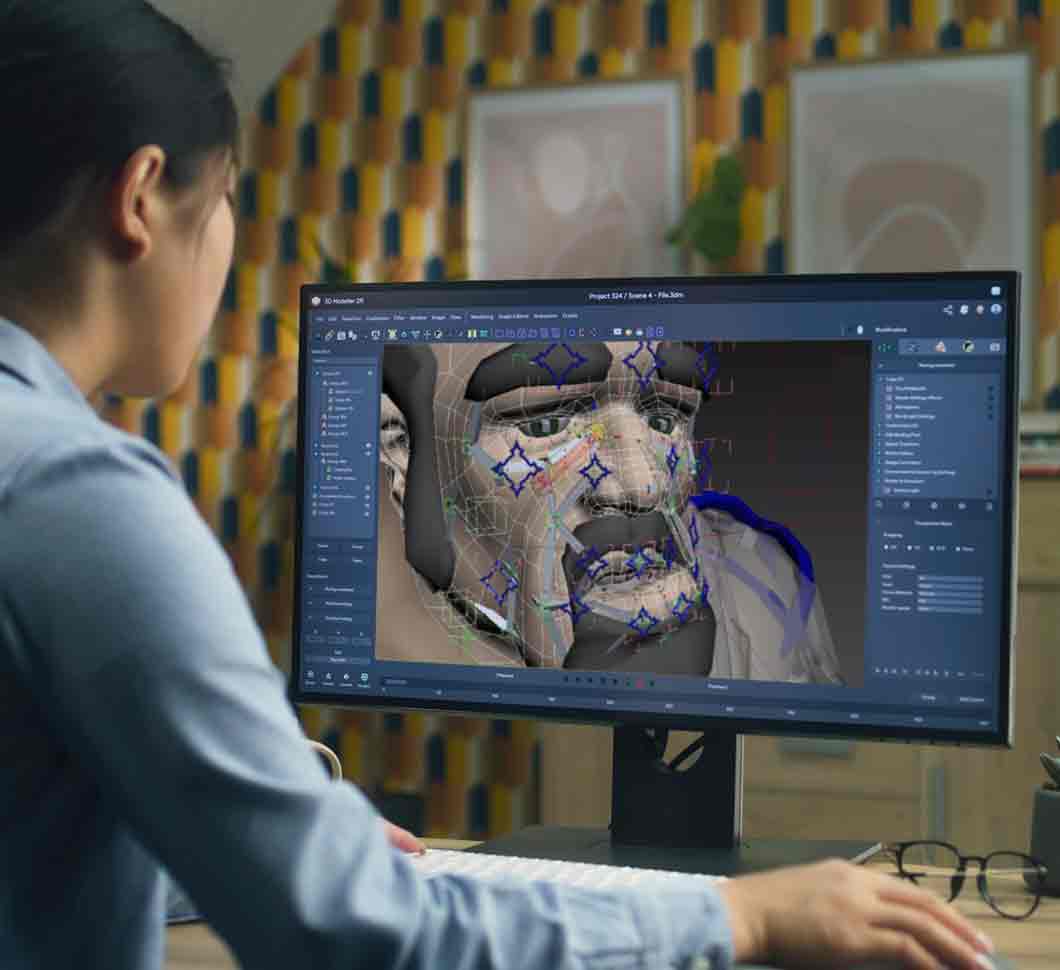 Character Skinning: The Key to Lifelike 3D Animation for Games
Character Skinning: The Key to Lifelike 3D Animation for Games  The Best Ways to Use Procedural Generation in Games
The Best Ways to Use Procedural Generation in Games  3D Modeling as the Cornerstone of Your Video Game
3D Modeling as the Cornerstone of Your Video Game  3D Character Modeling: Mastering the Art of Digital Design for Lifelike Creations
3D Character Modeling: Mastering the Art of Digital Design for Lifelike Creations  How to Perform 3D Modeling in Unity with No Drop in Quality
How to Perform 3D Modeling in Unity with No Drop in Quality 








